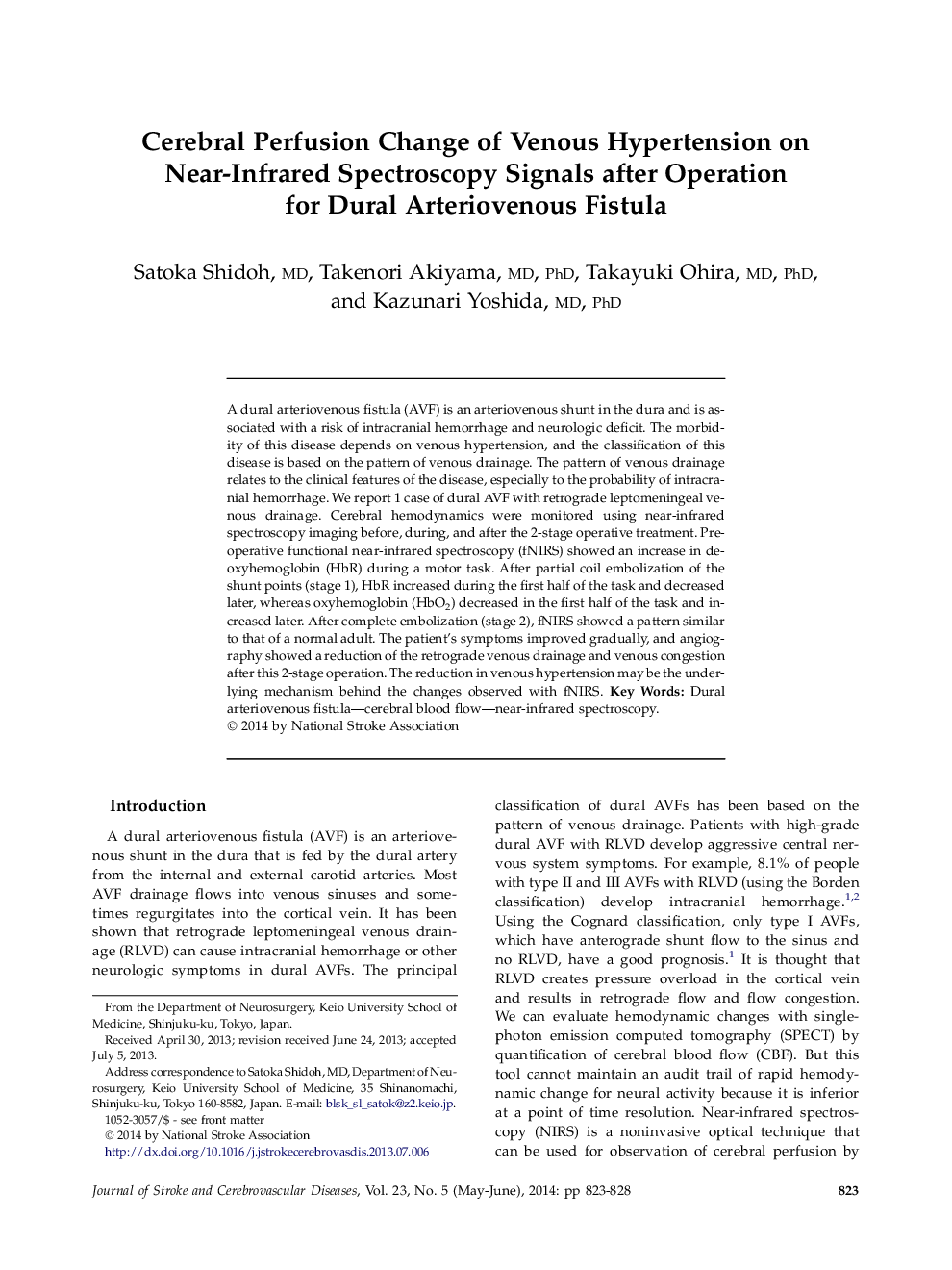| Article ID | Journal | Published Year | Pages | File Type |
|---|---|---|---|---|
| 5875065 | Journal of Stroke and Cerebrovascular Diseases | 2014 | 6 Pages |
A dural arteriovenous fistula (AVF) is an arteriovenous shunt in the dura and is associated with a risk of intracranial hemorrhage and neurologic deficit. The morbidity of this disease depends on venous hypertension, and the classification of this disease is based on the pattern of venous drainage. The pattern of venous drainage relates to the clinical features of the disease, especially to the probability of intracranial hemorrhage. We report 1 case of dural AVF with retrograde leptomeningeal venous drainage. Cerebral hemodynamics were monitored using near-infrared spectroscopy imaging before, during, and after the 2-stage operative treatment. Preoperative functional near-infrared spectroscopy (fNIRS) showed an increase in deoxyhemoglobin (HbR) during a motor task. After partial coil embolization of the shunt points (stage 1), HbR increased during the first half of the task and decreased later, whereas oxyhemoglobin (HbO2) decreased in the first half of the task and increased later. After complete embolization (stage 2), fNIRS showed a pattern similar to that of a normal adult. The patient's symptoms improved gradually, and angiography showed a reduction of the retrograde venous drainage and venous congestion after this 2-stage operation. The reduction in venous hypertension may be the underlying mechanism behind the changes observed with fNIRS.
